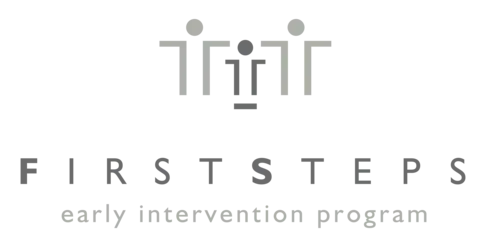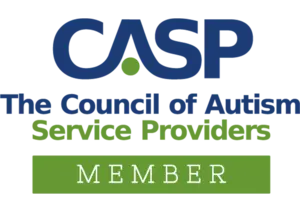As a parent, first hearing that your child may have an Autism diagnosis can be the beginning of an avalanche of questions. “What is Autism?” “How can I help my child?” “What will my child’s future look like?” might be just the beginning. Knowing where to start can be scary and overwhelming to say the least.
Here, we’ll try to start you on your journey by answering some of those early questions you may be asking.
What is Autism?
As a neurological and developmental disorder, Autism Spectrum Disorder (ASD) may impact many areas of your child’s development, from communication skills and learning to social interaction with peers. While the diagnostic terms and criteria have changed several times over the years, per the DSM-5, ASD is currently defined by two main criteria, 1) persistent deficits in social communication, and 2) restricted and repetitive patterns of behavior. But as the name “spectrum” implies, there is an extremely wide variety of how these two main areas may present themselves as specific symptoms for any given child.
Let’s look at social communication. Some children may be highly verbal, conversational even, but have deficits in the finer details of social relationships, such as understanding others’ perspectives, reading social cues, following facial expressions, considering others’ preferences and interests, developing imaginary play, developing friendships, and so on. On the other end of the spectrum, we may see children with a total lack of vocal communication or speech, or children who have some words but may use them in repetitive ways that are not effective in expressing their wants and needs. Such a lack of effective vocal communication may understandably be associated with other behaviors as a child tries express their needs, such as tantrums or aggressive behavior.
The second criteria, restricted and repetitive patterns of behavior, presents as a wide spectrum as well. For some children, this may present as “hyper focus” on particular topics of interest (for example, Steven Spielberg films, math, etc.), or particular types of toys (e.g., those with wheels, things that line up). Some children may have extreme preferences for particular routines or items (e.g., will only drink out of their blue cup, insist on wearing the same pair of pants every day), and others may engage in repetitive motor movements (e.g., hand-flapping, jumping, rocking). While we all have preferences, it is the extent to which these routines may become disruptive to your child’s life that may determine whether these preferences cross over into an area of concern for you and your family (for example, if a change in routine leads to self-injurious behavior).
In sum then, if someone has ASD, by definition they have a neurodevelopmental disorder that includes some combination of deficits in social communication and restricted and repetitive patterns of behavior. But each child’s presentation of symptoms will be highly unique.
Is there help if my child has Autism?
Yes! There once was a time, many decades ago, that people inaccurately believed that people with Autism could not learn. Thankfully, much has been learned since then! While there is no “cure” for Autism, several decades of research have demonstrated that early, intensive, intervention can be extremely effective in addressing the core symptoms of ASD and helping children learn the skills to go on to live more productive, joyful, and independent lives.
But as a parent, how do you navigate all of the available treatments? A quick Google search can send you down several rabbit holes filled with endless initials…ABA (Applied Behavior Analysis), DTT (Discrete-Trial Training), PRT (Pivotal Response Training), RDI (Relationship Development Intervention and “Floortime”), OT (Occupational Therapy), TEACCH (Treatment and Education of Autistic and Related Communication-Handicapped Children), CBT (Cognitive-Behavior Therapy) and so on. It’s too much! How do you even know where to begin? And how do you know what treatments actually work?
One excellent resource for families trying to navigate the sea of ASD treatment options is the Association for Science in Autism Treatment (ASAT). This website provides extremely helpful unbiased overviews of the scientific research on all of the commonly available treatments for ASD, allowing families to make informed decisions about their child’s course of treatment.
As summarized by ASAT, at the present time, the preponderance of research supports interventions based in Applied Behavior Analysis (ABA) as effective in treating ASD. In fact, there is actually little to no empirical support for the other treatments (such as “Floortime” or RPM [Rapid Prompting Method]). So, as a starting point, parents can feel good about starting out by looking for behavioral-based, ABA treatments.
Within the umbrella of behavioral-based treatments and ABA, there is a range of different models and treatment options for families as well, from more structured approaches such as Discrete Trial Training (DTT), to more naturalistic models such as Natural Environment Training (NET) where treatment is embedded within the context of play and other daily life activities. But regardless of the specific behavioral procedures being used, all effective ABA providers will collaborate with you and your child to identify your child’s specific core symptoms and goals for intervention, such as communication skills, play and leisure skills, social skills and friendship development, self-help and daily living skills, preparation for school, community skills, and so on.
All ABA providers may have a slightly different approach, so parents will want to find a provider whose values and approach best match their family and goals. And going back to considering the broad spectrum that is Autism, you will also want to ensure a provider has programming for all ends of the spectrum, from programs to help establish functional communication and speech to those that teach imaginary play, perspective taking, and executive functioning skills.
When to get help?
Now! The earlier the better. As soon as you suspect there may be a developmental delay in your child is the time to intervene. But the good news is…it’s never too late! Depending on your child’s age and needs, treatment delivery may vary between what is considered “early intensive behavioral intervention” (EIBI) to more “focused” ABA.
A considerable body of research supports the efficacy of the EIBI model, where children, generally between the ages of two and four, receive intensive and comprehensive ABA treatment for 25-40 hours per week, generally for 2-4 years. In practice, this model can be delivered in the natural environment of the family home, in the fun environment of an ABA center, or some combination of both, allowing the child to practice skills where they are needed most. For example, in home-based services, the child gains practical experience learning to communicate effectively with their family, play with their siblings, and take care of their own grooming, while in the center they can practice participating in group-based learning, interacting with peers, and following instructions. For older children, focused ABA programs select one or two specific goals to address in a smaller weekly intensity (generally around 10 hours per week).
Regardless of when you start, all ABA programs can be effective in helping you and your child meet your individual family goals! The most important thing will be for you to find a provider with whom you feel comfortable to partner with on your journey.
As a valuable resource on ABA intervention for ASD, check out the Council of Autism Service Provider’s ABA ASD Practice Guidelines.





Leave a Reply